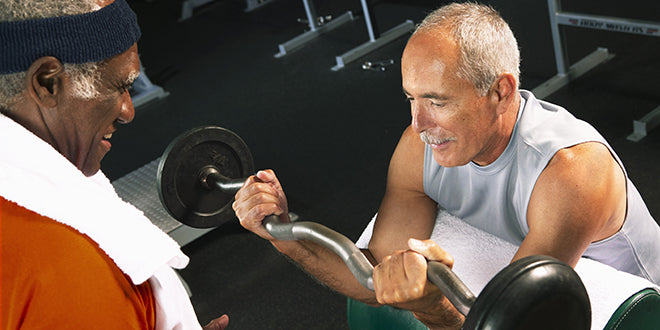With the arrival of warmer temperatures as summer approaches, we will start to see sunscreen lotions lining the shelves of grocery stores and pharmacies. We’ll also see many “health experts” warning people of the risks associated with unprotected sun exposure.
Although we don’t think of the skin as an organ, it is in fact the body’s largest organ, weighing around 8 pounds for the average adult and covering about 22 square feet. The skin has many functions; it acts as a waterproofing, insulating shield, guarding the body against extremes of temperature, damaging sunlight, and harmful chemicals. It also exudes antibacterial substances that prevent infection and manufactures vitamin D for converting calcium into healthy bones. The skin additionally is a huge sensor packed with nerves for keeping the brain in touch with the outside world. At the same time, the skin allows us free movement, proving itself an amazingly versatile organ. Only God could have created such an amazing organ. While many of these things like waterproofing and insulating are functions we can comprehend the way the skin can help make strong bones is a little more complicated and difficult to appreciate.
With adequate exposure to the sun, the skin’s Provitamin D3 (a cholesterol substance) reacts with the ultraviolet-B (or UVB) rays in sunlight to form vitamin D3. From there, the body takes over, first passing the vitamin D through the liver and then through the kidneys, converting it along the way into the form that the body needs. For sunscreen to be effective in keeping the skin “protected” as many “health experts” suggest the UV rays from the sun are blocked and reflected back off the skin. So if we are protecting ourselves with sunblock we are actually making it impossible for the body to manufacture vitamin D3. As we look at the sunscreens on the market today we find that most of them available are SPF 30, 50, 70 and even 100. The higher the number the less chance the UV rays will be able to penetrate into the skin which means that there is less opportunity for the body to produce any D3. Adding to the issue of the difficulty for the body to produce vitamin D3is what happens to D3 if the skin is cleaned (showering) after sun exposure. As D3 is made from cholesterol, an oily substance is formed, but washing with soap and water will remove this vitamin D3 forming substance from the body significantly reducing D3 absorption. If after sun exposure a shower is required, it is best to reserve the soap for the armpits and private part and just rinse the rest of the body with water.
Skin color is another area that needs consideration when discussing sunscreen and sun exposure. Skin color is determined by melanin, a pigment produced in the epidermis to protect us from prolonged exposure to the sun's ultraviolet (UV) rays. Dark-skinned people produce more and deeper-colored melanin particles. People with the darkest complexions are native to tropical regions. Fair skin is usually found in people from northern latitudes where solar rays are relatively weak. Here the benefits of dark skin are outweighed by the need for bone-strengthening vitamin D, produced through exposure to UV rays. The darker the skin, the greater the natural protection from the sun but the greater the need for more sun exposure. African Americans require as much as 10 times sun exposure as do Caucasians.
Clothing is another part of the equation. Clothes are now being made to block UV rays so for the body to be able to produce D3 the skin must be exposed to the sun. Note that the sun has to be higher than 45 degrees elevation in order for the rays to create vitamin D. You can determine the elevation by looking at the shadow of something sticking straight up. If the shadow is the same length or shorter than the object, then its 45 degrees or greater. Depending on what latitude you live, there are some parts of the year, the sun never gets high enough to create vitamin D. Anything north of the NC-VA border will not receive the correct angle of sun from October until about March. Many years ago the food industry started fortifying milk with vitamin D in an effort to help prevent rickets.
Today, it is understood that low vitamin D levels have also been associated with increased rates of cancer, cardiovascular disease, diabetes (type 1 and 2), higher risk of the flu, greater risk of autism, and autoimmune diseases like multiple sclerosis, lupus, rheumatoid arthritis, and of course osteoporosis. Vitamin D has also been shown to elevate mood and a sense of well-being. Vitamin K2 is found in green leafy vegetables. Recently, K2 has been supplemented with D3 as it helps to make the D3 more effective in bone health and assists in preventing cardiovascular issues primarily hardening of the arteries. Both D3 and K2 are vital to ensure good health. Of course, the best way to get vitamin D3 is directly from the sun’s rays but few people are able to get in the sun frequently enough or when they do, they use sunscreen which blocks the UV rays. If they do happen to get adequate sunshine through the clothes and sunscreen then they wash the D3 away when they shower. It is easy to understand why 70-80% of the US population are not getting anywhere close to enough D3 and why sickness and disease is so prevalent. The best way to ensure protection is through a clean, living foods diet and effective supplementation of vitamin D3 with K2, no matter what time of the year it is.
Have you had enough vitamin K today? Find out more on vitamin K, essential sources, and medical studies from a previous post.








